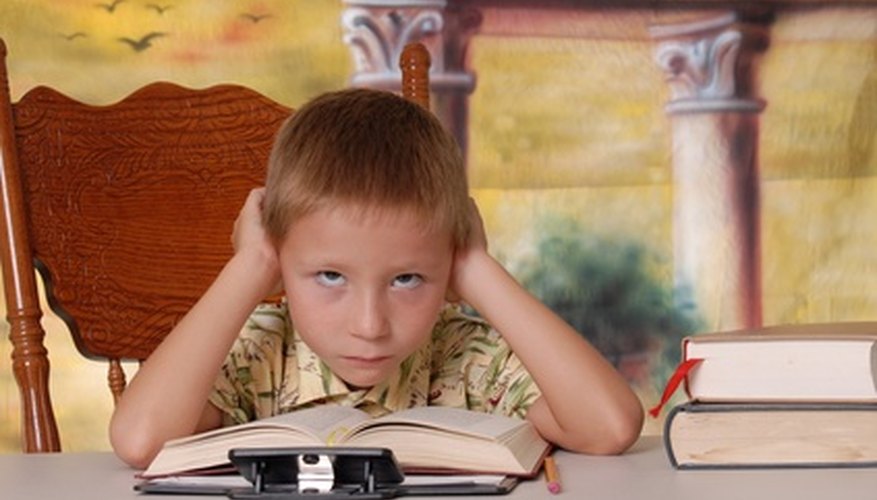Proactive and reactive approaches to classroom management address discipline styles. Every teacher uses one of the two approaches to deal with discipline issues and must find a way to effectively discipline his classroom in order for it to run smoothly.
Theories
A proactive approach is when the teacher tries to eliminate a problem behaviour before it becomes a problem. A reactive approach is when the teacher deals with a behaviour when it becomes a problem in the classroom. Both approaches are used by teachers in addressing misbehavior in their classroom. Teachers must deal with problem behaviour so as to not interrupt the education process.
- A proactive approach is when the teacher tries to eliminate a problem behaviour before it becomes a problem.
- A reactive approach is when the teacher deals with a behaviour when it becomes a problem in the classroom.
Why Students Misbehave
Carol Cummings, author of the book "Managing to Teach," writes that there are four types of behaviour that lead students to misbehave. The attention seeker strives for attention so his behaviours will allow him to be the focus of the classroom. The power seeker refuse to follow direction and must have the last word. The revenge seeker will verbally abuse others. Some misbehavior because they wish to avoid failure. These are the students who don't do their work and sleep in class in order to avoid further failure.
- Carol Cummings, author of the book "Managing to Teach," writes that there are four types of behaviour that lead students to misbehave.
Proactive Approach
In the proactive approach to classroom management, the teacher uses different behaviours to lessen the likelihood that a student will act out. The student will achieve the desired behaviour. A teacher can use a proactive approach by establishing rules in the classroom and praising students who behave according to behaviour expectations. If students are aware of the rules and know the consequences of violating them, this will eliminate some misbehavior. If the teacher praises students for appropriate behaviour, they will continue to behave this way in order to seek additional praise.
- In the proactive approach to classroom management, the teacher uses different behaviours to lessen the likelihood that a student will act out.
- If the teacher praises students for appropriate behaviour, they will continue to behave this way in order to seek additional praise.
Reactive Approach
The reactive approach to classroom management is a teacher's response following a student's misbehavior in the classroom. The teacher imposes punishment that is fair and consistent when dealing with a student's inappropriate actions. An example of this would be a student being excessively late to class. This student may be punished by having to serve detention after school. These actions may deter the behaviour in the future, but it also has a chance of being unsuccessful.
- The reactive approach to classroom management is a teacher's response following a student's misbehavior in the classroom.
- The teacher imposes punishment that is fair and consistent when dealing with a student's inappropriate actions.
Effectiveness
The difference between the two theories is that in the proactive approach the teacher tries to avoid future conflict before it happens, whereas the reactive approach only temporarily addresses the issue. It is easy to address an issue as it comes up, but it is more fruitful to address the issue before it becomes a problem. A teacher who uses a proactive approach will be less stressed when dealing with issues and every student will know what is expected of them. It will also help address each of the four issues that cause students to misbehave.
- The difference between the two theories is that in the proactive approach the teacher tries to avoid future conflict before it happens, whereas the reactive approach only temporarily addresses the issue.
- It is easy to address an issue as it comes up, but it is more fruitful to address the issue before it becomes a problem.
